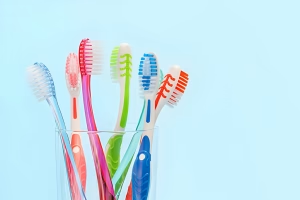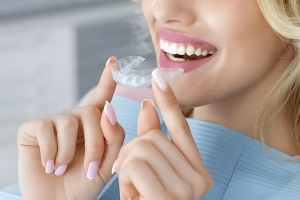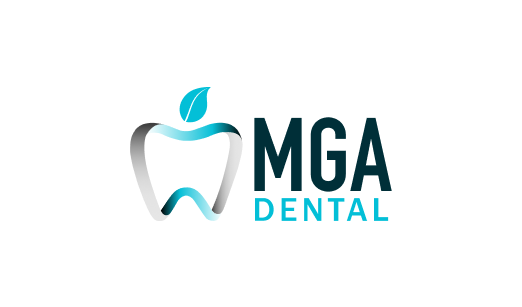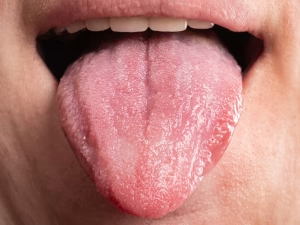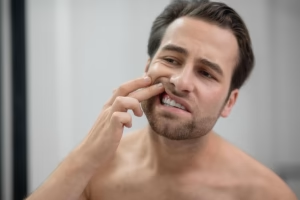Water Flossing – Main Benefits and How to Do It
30 November 2020
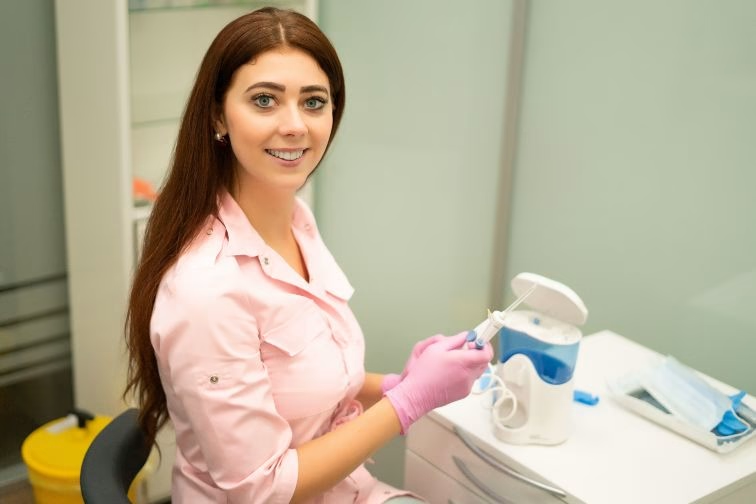
“Brush your teeth at least twice a day and make sure to clean between your teeth as well.” We’ve all probably heard this sentence way too many times in our lives, it’s beyond counting. Goes to show, oral hygiene is constant work.
Yet maintaining oral health doesn’t have to be a daunting experience. Indeed, food particles get stuck on a daily basis and require attentive flossing but it still beats undergoing treatments for potential issues like gum disease. No one really likes visiting the dentist anyway.
Luckily, with today’s interdental cleaners, removing dental plaque is a breeze. In this article, we will be focusing on the effectiveness of one special device called – the water flosser. We’ll examine just how effective water flossing really is.
What Is A Water Flosser?
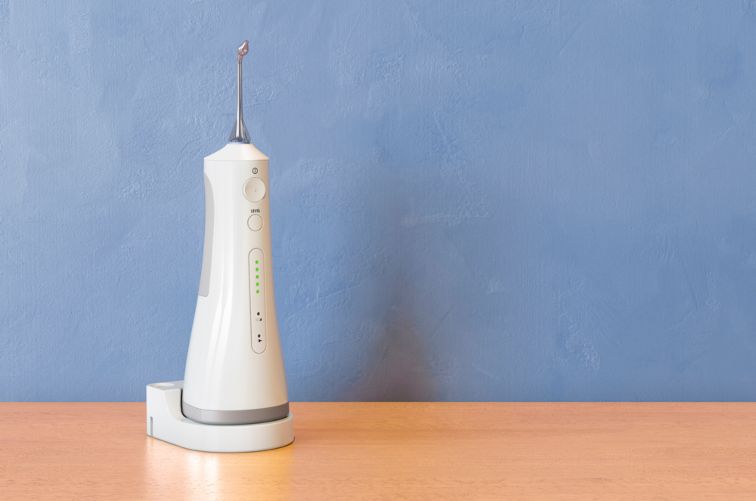
Lots of people nowadays seem to google: what is a water flosser? Essentially, it is a device that serves to remove plaque, food, and bacteria from your mouth. Paired with regular flossing, a water flosser may improve your daily oral routine and overall dental health – if done properly, that is.
While there are many types of water flossers, all of them have a fairly similar design. They have a reservoir, a special nozzle, and an electric motor that powers the pump. The motor and pump create a pressurized stream of water that shoots through the nozzle directly between your teeth. Water pressure helps to remove bits of food, plaque, bacteria, and calcified deposits known as tartar.
There are four different types of water flossers:
- Countertop – This type is the bulkiest and heaviest. It rests on a countertop and plugs into an electrical socket. They also have an irrigation tank that needs a refill every time it runs out of water.
- Cordless or Battery-Operated – This type is usually small, slim and portable. It provides the best flexibility and is perfect for travellers. However, they are not as powerful as countertop flossers.
- Shower Flosser – This flosser connects to your showerhead and you can floss before, after or during showering. You don’t need batteries or electricity, so there is no worry about refills. Although simple, they’re usually more difficult to manage.
- Faucet Flosser – This is the most popular type of water flossers. It works like shower flossers, but it has a cord that attaches to your regular faucet instead to your shower head. Similar to shower flosser models, the main disadvantage is lack of maneuverability.
How To Use A Water Flosser

There are several pieces of advice on how to use a water flosser properly and with maximum effect:
- Fill your water flosser’s tank with warm water.
- Then place the flosser tip in your mouth. To avoid the mess, lean over your sink.
- Turn it on and start cleaning. Keep the handle at a 90-degree angle to your teeth and spray. Water will come out in constant pulses, washing between your teeth.
- Start at the back teeth and work your way throughout your mouth. Try to focus on the gum line, the top of your teeth, and the areas between each tooth. Don’t forget to reach and clean the back of your teeth, too.
- Once in a while, make a brief pause, holding the tip of the flosser between each tooth. This will allow water to flow out of the mouth and straight into your sink.
- The cleaning process usually takes about 2 minutes. After you are done, empty any excess water from the reservoir, so that bacteria don’t grow inside.
Remember, while it is important to know how to use a water flosser, a water flosser won’t replace traditional flossing nor your toothbrush. Brush your teeth twice a day, and use water flosser before or after to increase the cleaning effect.
Benefits Of Using A Water Flosser
Water flossers are particularly useful if your gums are sensitive or you have some other gum-related problems. A water flosser is also great for cleaning braces, crowns, bridges, and other dental implants.
Traditional flossing may be too invasive and hard on your gums. Another problem with daily flossing is having a hard time doing it properly. Simply placing the dental floss between your teeth and giving it a few nudges here and there isn’t all that effective. The right way to do it is by making a C-shape with the string floss, ensuring it properly reaches all parts of your teeth.
Water flossers are easier to use than string floss. They don’t require you to insert your hands halfway in your mouth. Also, there are no leftover strings to deal with after you are done.
How To Clean A Water Flosser
It is recommended that you clean your water flosser every one to three months. For cleaning, you should use water, vinegar and a dishwasher.
There are three simple bits of advice on how to clean water flosser:
- Clean the water reservoir and the reservoir lid. Remove the water reservoir and reservoir valve by pushing it from the back. Clean the lid by rubbing it with warm water and set it aside. Put the reservoir into your dishwasher and make sure to remove it before the heated dry cycle. Insert the lid, top side up.
- Clean the internal components of your water flosser. After you clean the reservoir and valve, put the reservoir back on top of your machine. Mix 2 to 4 tablespoons of white vinegar together with some warm water. Pour it into the reservoir and run half of it through the flosser. Turn the water flosser off and put the handle in the sink. This way, the water and vinegar solution can slowly drain out the handle. 20 minutes later, run the rest of the liquid through and then clean it with warm water.
- Clean the flosser tip and the surface of the handle. To clean the surface of the handle, push out the tip using the eject button. Then immerse the handle in a container of white vinegar for about 7 minutes. After that, rinse the handle. To clean the tip, put it in white vinegar for 5 minutes. You can also use hydrogen peroxide as well, just don’t forget to rinse the tip.
Water Flosser vs Regular Floss
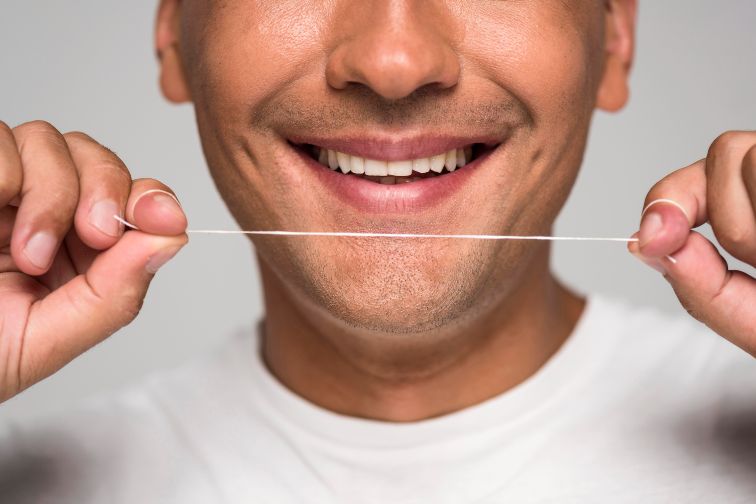
Flossing is crucial because it enables you to clean below your gum line where your toothbrush can’t reach. However, many people find that flossing with traditional plastic or nylon hurts their gums.
This can create chronic bleeding, particularly in people with delicate gums – which may explain why many people often avoid flossing in the first place. This leads to an increased risk of gum disease and tooth decay. So when it comes to water flosser vs regular floss, water flossers tend to provide several advantages:
- They are less abrasive. Water flossers provide a more soothing option compared to traditional floss. They are less likely to make your gums bleed or become inflamed.
- Better gum health. Water flossers are great for tartar removal, as well as eliminating food particles, plaque, and bacteria stuck in those hard-to-reach areas. By regularly rinsing such often-overlooked spots, you decrease the risk of contracting gingivitis or other gum-related infections.
- Offer better cleaning. Many dentists advise using water flossers, particularly for people who have already started to develop gum infection. Unlike traditional floss, a water flosser is capable of cleaning deep into our periodontal holes, eliminating plaque and food scraps that traditional floss can’t reach.
- They are perfect for braces. Orthodontic appliances like braces are a challenge for your dental care and overall oral health. This is simply because they obstruct regular cleaning methods, like toothbrush and traditional floss. Water flossers are a great alternative because the water stream is capable of effortlessly rinsing behind and around the wires.
Summary
A water flosser can be a lifesaver, especially if you are wearing braces or suffer from gum disease. But there are numerous other factors that affect our dental hygiene, such as genetics, the shape of your teeth, their alignment, and whether you have dental implants.
Should you require the expert opinion, set up an appointment and consult with your dental hygienist about various dental health topics. We can demonstrate how to use your water flosser properly, ensuring your teeth stay spick and span.
Keep on water flossing!




